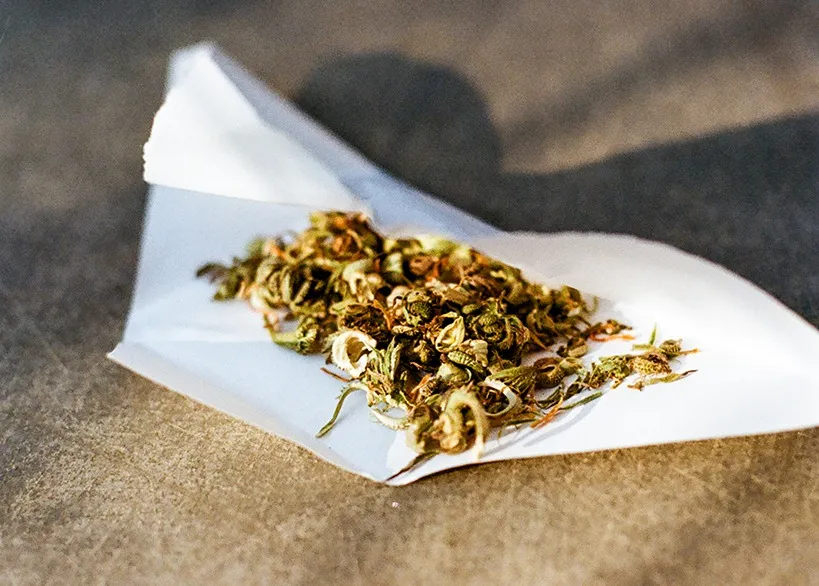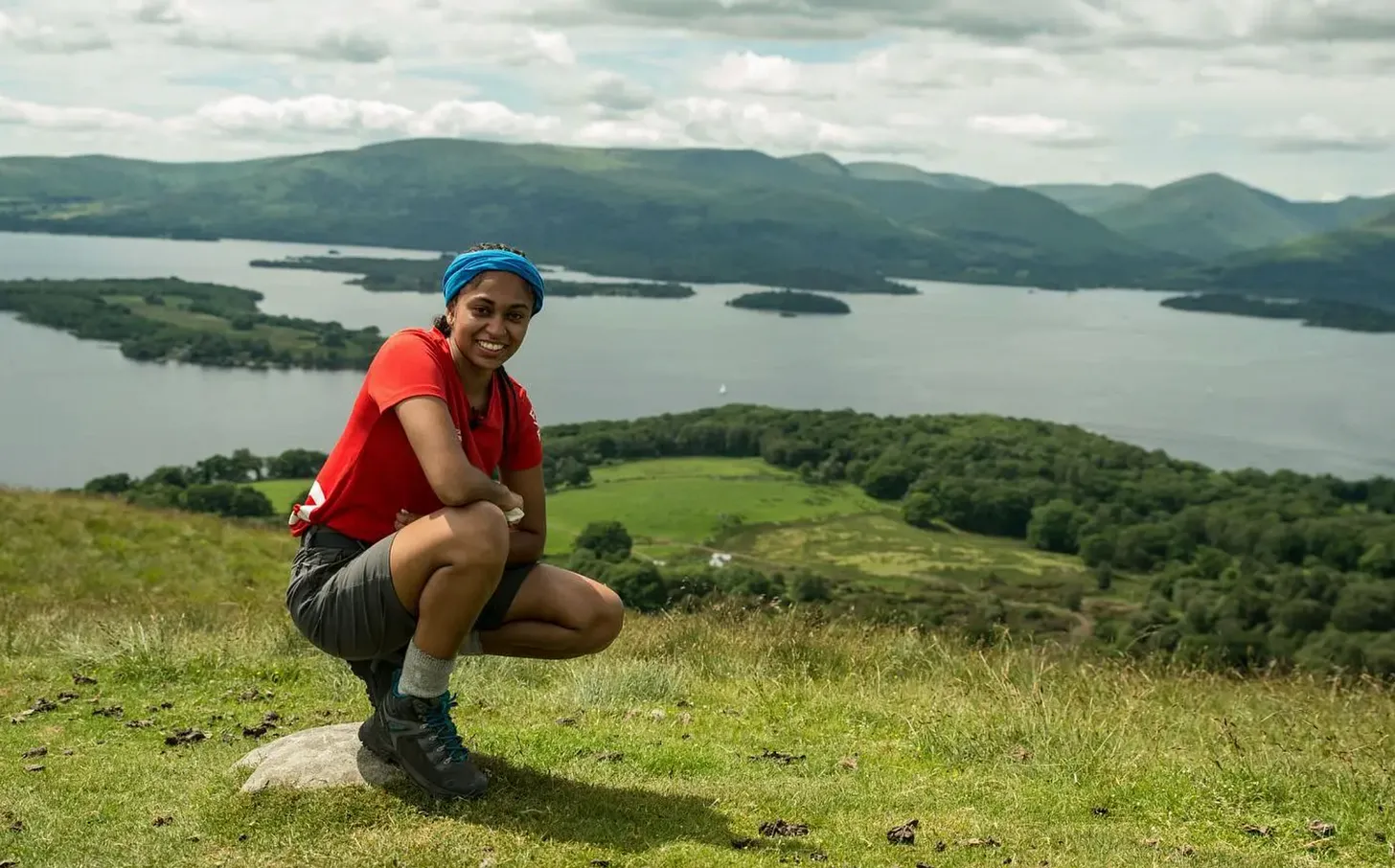In London, Roots Run Deep

Gardens are places of beauty, and of grit, rebellion, and tenderness. In many ways, they are also political spaces. The way we view the land is shaped by privilege, conditioning and colonialism, and to acknowledge this is to understand our relationship with the earth beneath our feet. Nestled somewhere between tower blocks and bustling traffic lie once-neglected plots of public land being reclaimed by residents, away from perfectly pruned shrubs and fenced-off private gardens, reigniting the magic of what it means to grow together.
It’s no surprise that a birds-eye view of London would reveal that almost half of the city’s land is green, seemingly made up of an abundance of open space, gardens and Royal Parks. However, a closer look reveals that only 20% of it is publicly accessible, with factors such as proximity and quality of green space affecting this, according to a report by the Greater Authority London (GLA). Beyond that, unused public land is often kept under lock and key by most local authorities, requiring access to be gained through complex procedures and lengthy leases. A promising campaign for the Right to Grow on these cherished parcels of land could see communities come together in an act of cultivation and nourishment for all, with Southwark Council being the first to adopt the motion.
In the UK, community gardens can be traced back to the Second World War, when allotments were established on inner-city sites to provide affordable, fresh fruit and vegetables to local areas. And for working-class communities, they’ve long been embedded in the social infrastructure of public housing estates, despite a recent decline in their communal green spaces due to gentrification and property development. Carole Wright, community gardener and urban activist, started her first garden on Brookwood Estate in South East London 18 years ago. “It’s important for people on housing estates to have green spaces for their health and to meet their neighbours as well, and it’s about affordability because not a lot of people are homeowners with a garden,” she says.

The fallout from COVID-19 still lingers on many of these estates as increased policing and surveillance continue to affect young people the most. As third spaces dwindle, the government’s austerity and neglect are felt by those most vulnerable, as they lack a safe outlet. Hundreds of youth clubs have closed down over the past 20 years, but green spaces remain. Perhaps, the power lies in how they are used. Will they be neglected, or will they take shape in the cracks that we’ve been left to fill?
If I’ve learnt anything, it’s that community gardens are symbols of collective strength. Working counter to gentrification, they consider society and the environment as a whole. While gentrification displaces communities and leads to increased property values and a higher cost of living, community gardens encourage social equity and engagement, as well as increase biodiversity and air quality, while lowering heat, amidst a looming climate crisis.
Hearing about the longevity of these spaces and the lasting impact they’ve had on members of Carole’s community fuels me with hope. “You catch up with somebody who you saw at seven years old. Now they’re married with children, and they have the memory and connection to the space from childhood,” she says.
Most, though, are only introduced to the healing benefits of nature as a young person or adult, as we begin to question our place in the world. Creators on social media may also help guide us towards lessons that schools and institutions fail to expose us to. 26-year-old Kwesia, otherwise known as City Girl in Nature, is a podcaster, youth coach, doula and mother “on a mission to inspire young people in inner-cities to connect with nature.” Having grown up in South East London, she found her trajectory changed after being offered the opportunity to go on an expedition to the Amazon rainforest with the British Exploring Society, following a series of traumatic events in her life.
She feels that one of the main barriers young people face in accessing green space is their life experiences. “You can tell people spending time in nature is great for them or will help them, but if they’re focusing on making a living or when their next meal is going to be or struggling just generally, with so many things, it’s very hard to reach people like that.” The key, she tells me: “Meeting people where they’re at.”
While community gardens alone can’t reverse a person’s experiences or circumstances, they can break down many existing barriers. An open gate allows people to come and go as they please without restriction, to receive or give as much as they have to offer. For most, it’s not necessarily about having their hands in the soil as much as it is about absorbing the feeling of being in connection with others. “Some people have never done a stitch of gardening or even watering, but suddenly, you have an event, and they’ll be able to bring a packet of biscuits. And that’s more than enough. Even just having a positive comment,” Carole says.
Research shows that people of the Global Majority are likely to encounter further barriers, with 40% in England’s most green space-deprived areas, compared to 14% of white people, according to the Office of National Statistics (2020). Lack of representation in green spaces can also deter people from feeling like they can connect with nature openly and freely. Kwesia says: “It’s about being relatable, and having relatable people trying to share that message with them, otherwise they can’t see themselves in that space.”
Beneath these barriers is the lasting impact of forced displacement for people of the Global Majority living in the city. Among other factors, the physical and mental disconnect from nature can lead to increased stress, anxiety and depression, as well as health risks due to pollution and climate change. Returning home through the land, to one’s self and one’s lineage, is necessary for positive mental health and well-being. Interacting with the land in a way that our ancestors would have before colonialism nurtures past and present wounds, and puts purpose and belonging in place of the erasure and exploitation that once existed.

Earth Tenders is one of the few Black-led growing spaces in London that is publicly accessible, being based inside Dulwich Park. Their focus on non-Western growing methods and experimentation with different cultural foods opens up the space to a diverse community of people. Idman Abdurahaman, one of the founders, tells me about how a radical relationship with the land can be built by looking to it for teachings about our ancestry, decolonising our hierarchical view of the natural world. “It’s not about othering, but it’s more so about belonging,” Idman says.
To belong is to exist as part of something much bigger than ourselves. In a community garden setting, we open ourselves up to connections outside our sphere. You don’t know who you might encounter and chance is a beautiful thing. Part of it is also being able to engage in a sensory experience, something that a fast-paced and hyper-productive existence doesn’t exactly facilitate. As if transcending space and time, it actively resists capitalism. “It’s this one space that allows you to disconnect and really just pay attention to what you’re doing, like working with your hands and putting your hands in the soil, but also connecting with the people around you. The joy that exists in that place is quite healing,” Idman says.
By inviting people from all walks of life, young and old people come together too. Living in a world that idealises an individualistic lifestyle, feelings of isolation aren’t uncommon. For young people to connect with their elders helps to remove that sense of alienation. In the same way we may turn to nature, we are engaging with a force that has endured more than ourselves and has come out the other side. Through stories shared and advice spoken, a mutual exchange of wisdom reassures us that there is hope and that we are part of something larger.
For those who lack a parental figure in their lives, it’s important to receive guidance when navigating a path forward, and for many, it is a way of reconnecting with heritage through a living archive of knowledge. Practices and rituals passed down through gardens and growing are celebrated in these spaces, ensuring they live on through the future stewards of the land.
Allens Community Garden in Stoke Newington is helping forge these tangible intergenerational connections, which often feel like a rare treasure today. Volunteer Grower Suzy Langsdale says they have been putting flyers through doors for events and workshops. “We’re trying to work a lot to build offline relationships, as well as use social media, because I think you reach different people by just having real relationships with real people around,” she says. This is something they brought to life through their recent Caribbean food growing workshop, where knowledge was exchanged through oral teachings.
Community gardens are indeed places of both retreat and resource, making up part of a wider land and food justice movement. Food insecurity is more of a problem than ever, with the cost of living at an all-time high, and accessing nutritious food is a luxury only afforded to a few. The earth is a provider of plentiful health, something a supermarket only knows how to brand, package and sell to us. Community gardens as growing spaces can help make nutritious food more accessible when combined with food banks and workshops that help us understand where our food really comes from.
So not only can we look to our green spaces in times of crisis, but within them lies a deeper resonance. It’s a process of relearning a perspective we were taught to forget, and a deeper reciprocal understanding of nature that we are one. We may come to a community garden with different struggles, fears, hopes and joys, but we are all part of the same movement. Maybe it’s as simple as taking a deep breath outside among the trees or basking in the presence of others, perhaps we are part of a quieter revolution that is dismantling a broken system one seed at a time.
